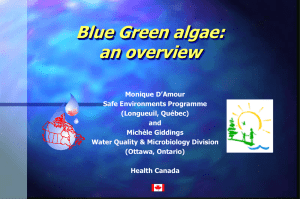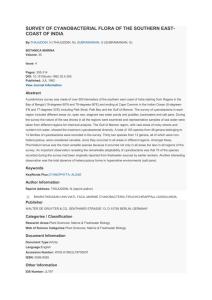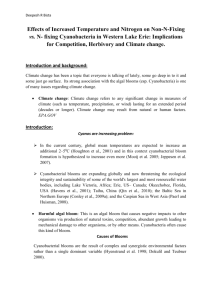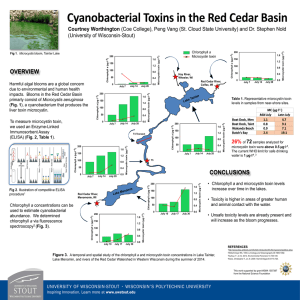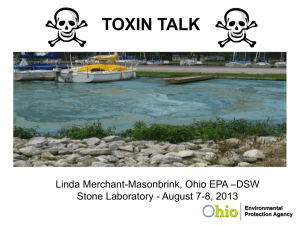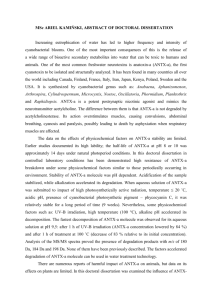Steve Mauro presentation PA/NY Sea Grant HAB Workshop 8/14/2013
advertisement
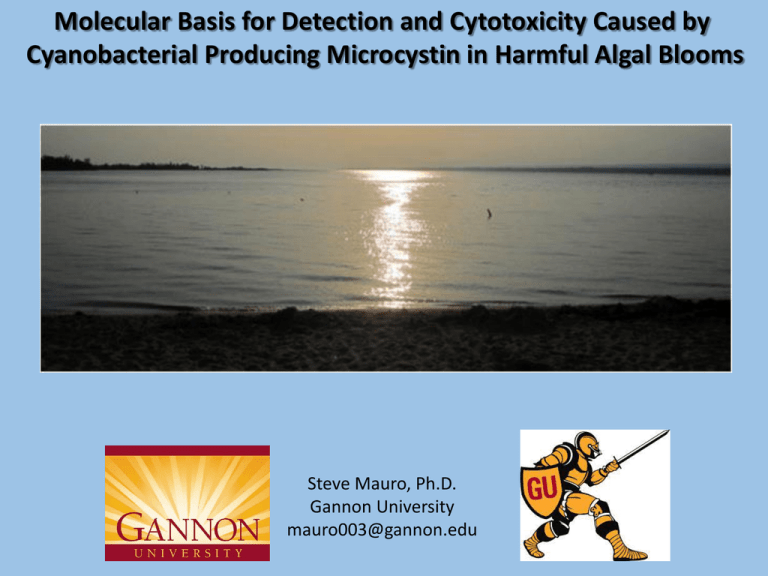
Molecular Basis for Detection and Cytotoxicity Caused by Cyanobacterial Producing Microcystin in Harmful Algal Blooms Steve Mauro, Ph.D. Gannon University mauro003@gannon.edu Cyanobacteria are common in freshwater environments - These are bacteria capable of undergoing photosynthesis - They produce approximately 25% of the worlds oxygen Bacteroidetes Proteobacteria Cyanobacteria - In Presque Isle beach water, cyanobacteria compromise approximately 27% of bacterial content Certain cyanobacterial strains can produce toxins - These cyanobacterial types become more prevalent as the summer progresses - Many aggregate together in a bloom - Temperature, nutrient content, and buoyancy are some factors involved in propagating harmful algal blooms INSERT PICTURE OF BLOOM HERE!!! Toxin producing cyanobacterial genera include: - Microcystis - Plankothrix - Anabaena - Nodularia Toxin expression The toxin is produced due to the expression from a mcy gene cluster There are many variants of this toxin that alter specific toxic impact Gene regulatory mechanisms are not clear but expression appears to be constitutively active in environmental samples Toxin Etiology The microcystin toxin is transported into cells and acts by hyperphosphorylating proteins - Can lead to: Nausea/vomiting Intrahepatic bleeding Cancer Skin irritation Acute respiratory pneumonia Gastroenteritis WHO guidelines for concentration of microcystin exposure Water type Risk level Microcystin concentration Cyanobacteria concentration Drinking water High 1 ppb Not detected Recreational water Low 1-4 ppb < 5,000 cells/mL Recreational water Moderate 4-20 ppb 5,000-20,000 cells/mL Recreational water High >20 ppb 100,000 cells/mL Concentrations found thus far in Presque Isle water samples using ELISA assay Avg. concentration microcystin (ppb) 7 6 5 4 3 2 1 0 Beach samples-no bloom Bay samples- no bloom Bay samples- bloom Conclusions/future perspectives Cyanobacteria is a common component of the Presque Isle ecosystem Microcystin is consistently present in Presque Isle bathing waters in the absence of a bloom at what would be considered acceptable levels of exposure Blooms have been detected in the Bay at levels that pose slight to moderate risk to humans Ongoing research and monitoring efforts are needed to better understand the spatial and temporal factors that drive mcy gene expression and harmful algal bloom formation Funding Sources Regional Science Consortium
